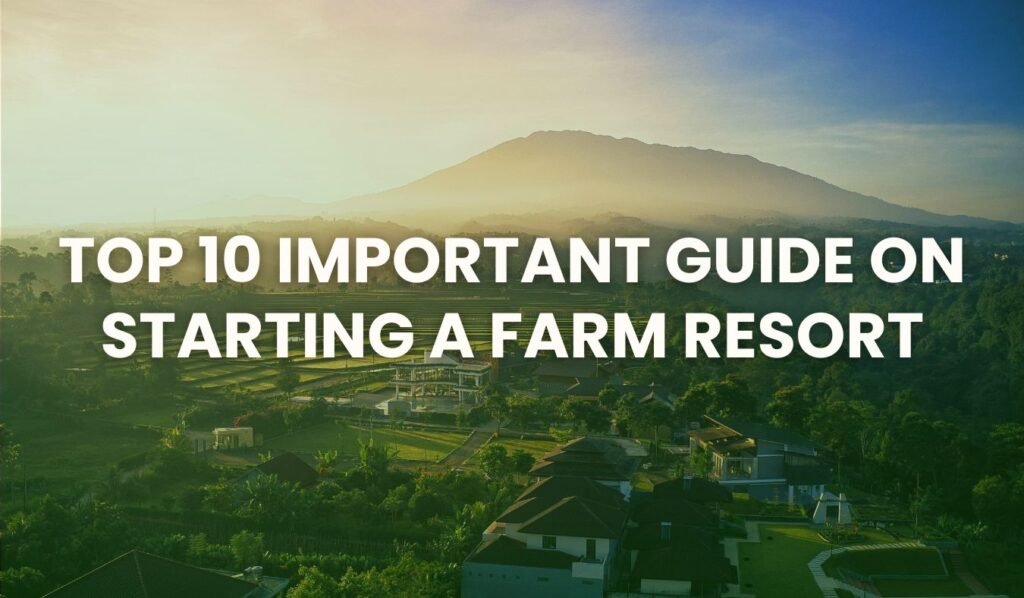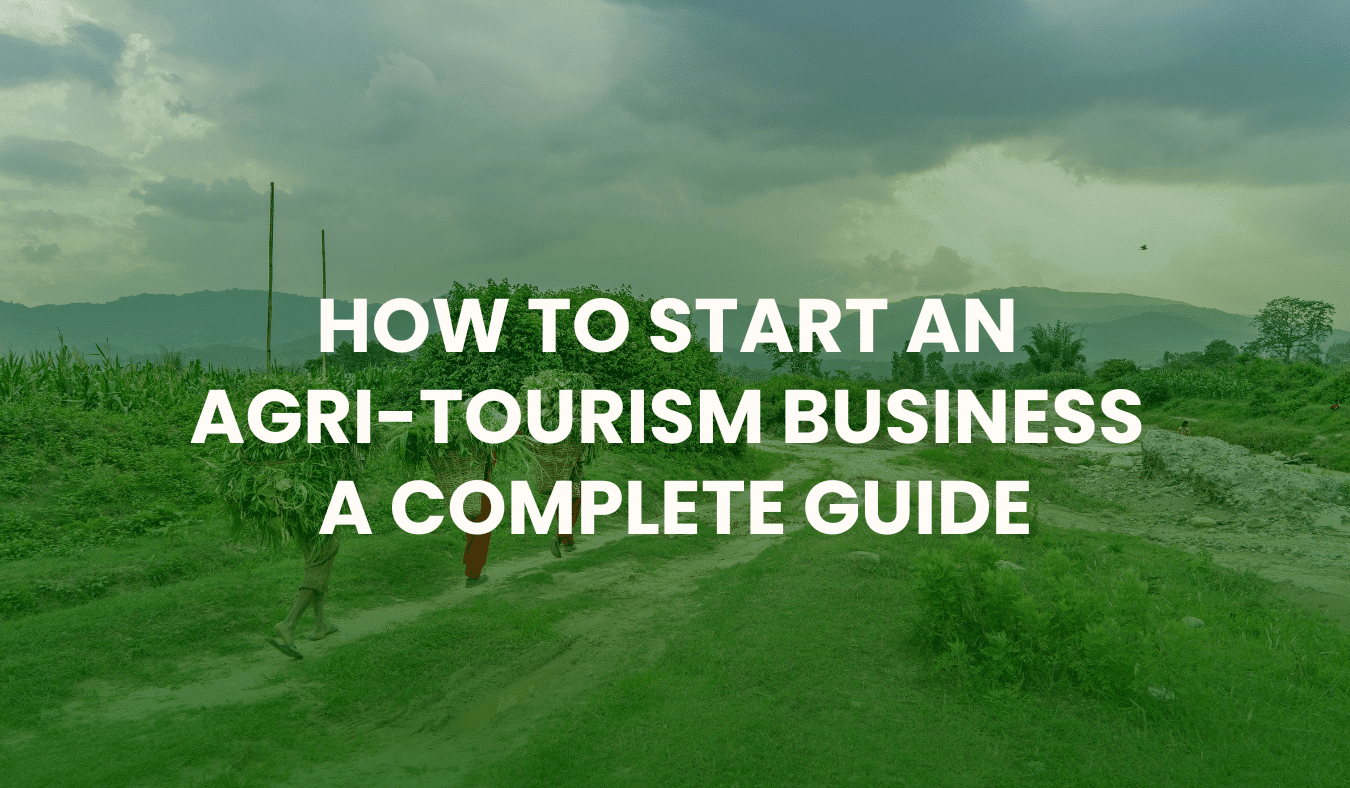A farm resort is more than just a vacation spot — it’s a unique blend of agricultural experience and leisure tourism. With the growing interest in farm tourism in the Philippines, more landowners and investors are considering turning their farmland into a profitable destination. Farm resorts offer guests the opportunity to experience rural life, enjoy nature, and participate in farming activities while relaxing in a serene environment.
Starting a farm resort is a rewarding venture, but it requires thorough planning and smart execution. This comprehensive guide will walk you through the top 10 most important things to consider before launching your own farm resort.
1. Understand What a Farm Resort Really Is
A farm resort combines aspects of farming and tourism into one experience. Guests can expect activities like:
- Harvesting fruits and vegetables
- Feeding and caring for farm animals
- Fishing, hiking, or swimming
- Farm-to-table dining
- Educational tours or workshops
It appeals to tourists who want to reconnect with nature, enjoy slow living, and support sustainable travel. This means your farm resort must offer both productive farming operations and well-designed resort amenities.
2. Plan With an Open Mind and a Clear Vision
According to Engr. Woodrow Escobal of JB Nature Farm & Resort, flexibility and calculated risk-taking are essential when planning a farm resort. Every property is different — your development should reflect the unique characteristics of your land and surrounding environment.
Start by crafting a Site Development Plan (SDP) with the help of land use experts. This document will guide your entire project, from land zoning and layout to infrastructure and amenities. Be open to different possibilities and consider:
- Which crops thrive in your area
- What amenities fit the terrain (e.g., hilltop cabins, lakeside cottages)
- How your project can stand out from other farm resorts
3. Secure Legal and Environmental Permits
One of the most overlooked — yet vital — steps in starting a farm resort is compliance. Before breaking ground, you must:
- Get local government permits
- Apply for an Environmental Compliance Certificate (ECC) from the DENR – Environmental Management Bureau
- Follow zoning ordinances and building codes
Neglecting these processes can result in fines, shutdowns, or irreversible environmental damage. As Escobal said, “You can never go wrong in caring for the environment.” Sustainability practices lead to better air and water quality, biodiversity, and long-term viability.
4. Start Small and Grow Gradually
It might be tempting to launch with full-scale amenities, but Escobal advises a phased approach. Starting small helps you:
- Establish best practices
- Test business and agriculture strategies
- Adjust based on real-world feedback
For example, open a few cottages and a small café first. Monitor guest feedback. Then add new amenities like a fishing area, event venue, or greenhouse. Similarly, test your farming practices across different seasons and refine your methods.
5. Choose the Right Location for Your Farm Resort
Location is everything in real estate, and this applies even more to farm tourism. You need a location that offers scenic beauty, accessibility, and agricultural potential.
Two excellent options in the Philippines are offered by VHBC (VHermosa Bright Corp.):
Mountain View Leisure Community
Nestled in Nasugbu, Batangas, this leisure community offers panoramic mountain views, cool climate, and proximity to tourist destinations. It’s ideal for:
- Nature-inspired cabins
- Wellness retreats
- Eco-tourism farming activities
East West Breeze Leisure Farm & Resort
Located in Cavite, this leisure farm and resort development is a promising space for agri-tourism. It features wide open spaces and fertile lands suitable for:
- Agribusiness and organic farming
- Weekend farm stays
- Eco-friendly resort facilities
Choosing a reputable land developer like VHBC ensures that your investment has the right infrastructure and potential for growth.
6. Invest in a Solid Financial and Recordkeeping System
Running a farm resort means juggling two complex businesses — agriculture and hospitality. This demands a robust financial system and compliance with government regulations.
Key steps include:
- Register your business with the Bureau of Internal Revenue (BIR)
- Print official receipts
- Keep accurate financial records
- Understand tax forms and payment schedules
Seek guidance from professionals to ensure your operations remain smooth, especially as your resort expands.
7. Develop Attractions That Appeal to Different Markets
Diversity is key. To attract a wide range of visitors, create experiences tailored to different interests:
- Families: Petting zoos, playgrounds, and farm tours
- Couples: Private cabins, spa services, sunset decks
- Students: Educational farming workshops, environmental awareness activities
- Corporate groups: Team-building packages and event facilities
The goal is to make your farm resort a destination that people of all ages and backgrounds can enjoy.
8. Build a Strong Online Presence
Marketing your farm resort online is no longer optional — it’s a must. Most travelers search for accommodations and experiences online, and they rely heavily on social media and Google.
Steps to build your digital presence:
- Create a website with booking capabilities and SEO-optimized content
- Set up social media pages (Facebook, Instagram, TikTok)
- Post consistently: behind-the-scenes, guest reviews, new attractions
- Use paid ads to increase visibility
You can even offer online reservations, e-commerce for your farm products, or virtual tours to expand your reach.
9. Stay Innovative and Trend-Responsive
Tourism trends shift frequently. What’s popular today may not be tomorrow. Stay relevant by:
- Updating amenities based on guest feedback
- Offering seasonal events (e.g., harvest festivals, night markets)
- Embracing eco-tourism, health & wellness, and digital nomadism trends
Innovation is your long-term survival strategy. Think of new ways to delight guests and differentiate your farm resort.
Agriculture.com.ph article on JB Nature Farm & Resort
10. Build Partnerships and Engage the Community
Farm resorts don’t exist in isolation. Their success is linked to the support of local communities, suppliers, and tourism networks.
Here’s how to foster collaboration:
- Partner with local farmers, chefs, and artisans
- Hire locals for staffing needs
- Promote nearby attractions and create tour packages
This not only boosts your credibility but also generates sustainable development within the region.
Final Thoughts
Starting a farm resort is both a passion project and a business opportunity. With thoughtful planning, environmental consciousness, and creative marketing, you can transform your land into a thriving destination. Whether you’re starting small or looking to expand, now is the perfect time to embrace farm tourism.
Looking for the ideal property to build your dream farm resort? Visit VHBC’s website and explore blog articles like the Exploring Leisure Farms, Sustainable and Organic Farming and many informative articles here.
They offer ready-to-develop locations with the perfect balance of nature, accessibility, and long-term investment potential.




























